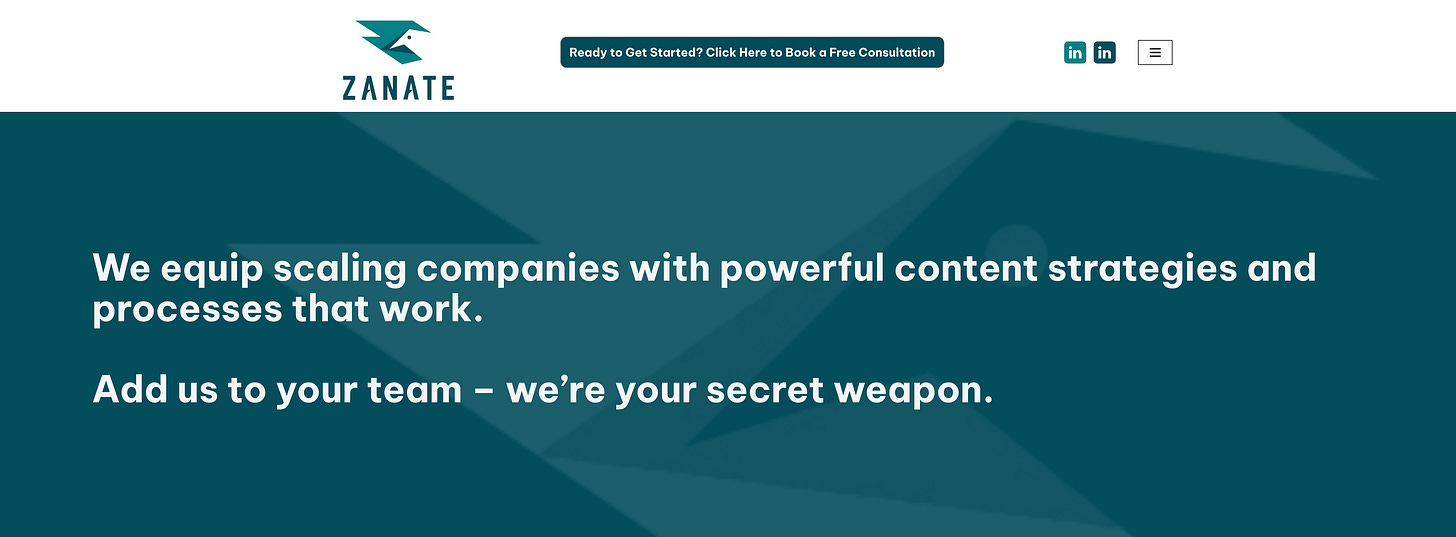Edition 2: How 'Single Path' Storytelling Pulls Your Ideal Customers Closer
The fatal mistake that far too many companies make is trying to market to everyone, everywhere, all at once, creating chaos as they go.
Learn this and love it:
Unfortunately, far too many companies do the exact opposite.
You ask them who their ideal client is: Everyone.
How are you going to tell your story? Everywhere.
What are the services you’re selling? Everything.
A lack of precision leads to chaos.
Doing all the things at the same time leads to burnout.
The less you do, the better off you’re going to be.
One client. One problem. One medium. One story. One transformation.
A single path.
💡 1 Big Content Idea: ‘Single Path’ Storytelling
If you market to everyone, everywhere, and sell them everything, you’re wasting your time. This type of ‘strategy’ cultivates chaos.
Even if you have a mature marketing operation and you’ve been telling a story for a while - and earning some awareness from that - there’s time to reframe.
Consider moving to a simple strategy:
1. One ideal customer or client
2. One problem they have
3. One storytelling medium - social media, website, thought leadership, etc.
4. One story - of a beginning, journey, and end state
5. One transformation - how your customer’s life improves, or their problems are solved
Committing to that simplicity ensures you stay focused and your company’s storytelling efforts are predictable, repeatable, measurable, and impactful.
Dig this post so far?
Share it with your friends!
🪓 2 Actions to Take: Develop an Emotional ‘Hook’ and Sell the Transformation
Humans are emotional creatures. We are one of the only species that feels emotion and, accordingly, both struggle with and enjoy what it brings to our lives.
People want to make emotional connections because it’s built into our DNA to do so. They want to know that you ‘see’ them—their struggles, successes, challenges, frustrations, and what they want from life.
The best way to pull your potential customers closer through ‘single path’ storytelling is to identify this emotion and paint a picture of how it ties to a transformation.
Identifying the Emotional Hook
It’s not too difficult to understand the ‘surface level’ pain your ideal clients or customers feel. If you’ve talked to any of them or done some basic research, you likely have a baseline understanding.
However, the real potential lies in speaking to ‘below-surface pain.’
That pain is the real culprit.
As an example, let’s say you’re selling a project management software:
The surface pain you’ve likely recognized is a lack of organization, so you sell how much more smoothly your client’s business would run if things were more organized.
The problem is your client’s lack of organization isn’t causing them pain; the stress tied to that lack of organization is.
Therefore, you should sell the emotional shift that happens when your client becomes more organized due to your software. It’s probably something like a sense of calm, right? Or lessened stress?
Find that below-surface emotion, and it’s much easier to think about transformation.
The Transformational Story
A great transformational story is rooted in a transition between states, from the ‘before’ state through the transformational journey to the ‘after’ state.
The before state is where your ideal client or customer is struggling and feeling those tough, ‘below-surface’ emotions. Your storytelling should initially ‘meet’ them in this place—it’s on you to show empathy for the struggle but immediately move past that into how you kick-start the journey.
What do you do to move people along the path to something new? What does it feel like to work with you? What are your processes and systems? What are the milestones that you’ll reach together?
Lastly, what is the ‘after’ state? How will your customers feel after buying your product or subscribing to your service?
It’s likely this ‘after’ state is the polar opposite of the ‘before’ state. If you can really nail this, an extremely powerful story is yours to tell.
Enjoying what we’re putting down so far?
Share The Content Code with a friend who loves great storytelling.
We’ll love you forever 😆
💻 3 Cool Resources to Check Out
Here are three tools that we use daily in our work as fractional content strategists that are worth checking out:
Melio - If you have to pay a one-off (outgoing) invoice like I did recently, Melio is a fantastic way to do that without paying a subscription fee or making any type of long-term commitment.
Moxie - I’m trialing Moxie to see if I can ‘kill’ a few of the tools that are starting to seem redundant and combine them under one roof. I’ll report back and let you know how it goes.
Frame.io - If you create a lot of video content in your marketing strategy or work on videos with your clients - Frame is a fantastic way to warehouse them and collaborate to get across the finish line together.
How We Help Our Clients
Our company, Zanate Ventures, is a content studio based in Austin, Texas. Our goal is to help companies tell a better company story through fractional content strategy services including, but not limited to:
Website content refreshes - to the customer’s transformation
Content strategy - focused on repeatable systems and processes
Marketing funnel development leveraging:
Social media
Blog content
Email marketing & outreach
Press mentions, appearances, and exposure
We offer several levels of engagement, but everything kicks off with a 30-Day Diagnostic period to identify the quickest wins and long-term plays that will help energize your company’s story.
Interested to learn more?
Book a 30-minute discovery call here:
See you on Thursday the 18th for Edition 3!
Thanks for reading The Content Code!
Subscribe for free to receive new posts and support my work.





